When it comes to acoustic guitars, the body shape and size play a crucial role in shaping the instrument's sound. Among the myriad factors influencing tone, body depth stands out as a significant contributor. From the booming resonance of a dreadnought to the intimate warmth of a parlor guitar, each shape offers a unique sonic signature. In this exploration, we delve into the influence of body depth on acoustic guitar sound, examining various shapes such as dreadnought, OOO, OM, parlor, grand auditorium, and super folk.
1. Dreadnought:
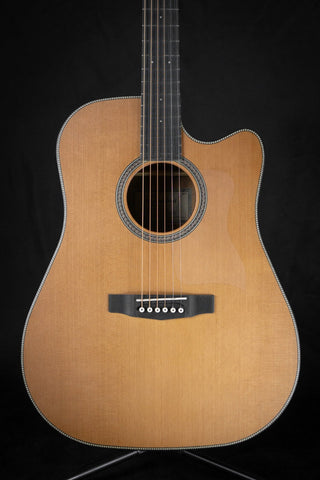
Dreadnought guitars are renowned for their bold, robust sound characterized by powerful bass response and pronounced projection. Typically featuring a large body with a deep, square-shouldered design, dreadnoughts offer ample volume and low-end resonance. The generous body depth and broad lower bout contribute to their deep, full-bodied tone, making them ideal for strumming and flatpicking styles. However, their size may be less comfortable for some players, especially those with smaller frames.
2. OOO:
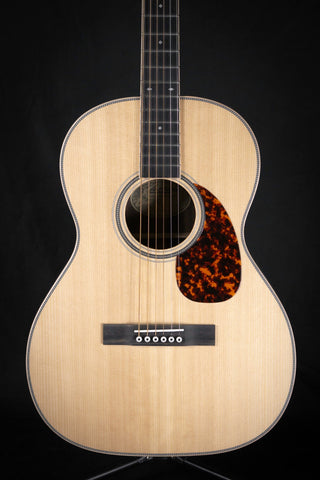
The OOO, or triple-O, guitar strikes a balance between the full-bodied sound of a dreadnought and the intimacy of smaller guitars. With a narrower waist and shallower body depth compared to dreadnoughts, OOO guitars offer a more focused, balanced tone with enhanced midrange presence. This makes them versatile instruments suitable for fingerstyle playing and light strumming. Their comfortable size and ergonomic design make them well-suited for players seeking a versatile acoustic guitar.
3. OM:
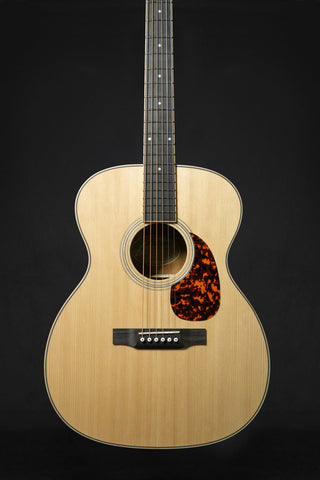
Similar to the OOO in size and shape, the OM (Orchestra Model) guitar features a slightly larger body and longer scale length. With a deeper body compared to the OOO, OM guitars offer enhanced bass response and volume while maintaining clarity and balance across the tonal spectrum. This makes them suitable for both solo performance and ensemble playing, providing a rich, well-rounded sound that blends seamlessly with other instruments.
4. Parlor:
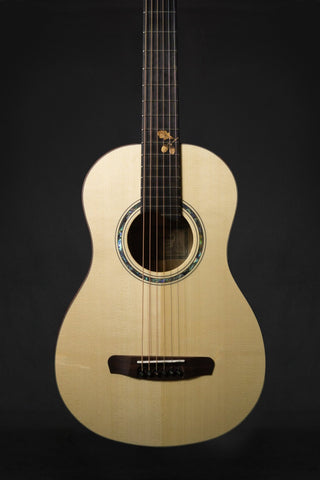
Parlor guitars, characterized by their compact size and narrow body, evoke a vintage charm and intimacy that resonates with many players. Despite their diminutive stature, parlor guitars offer surprising volume and projection, with a focused, articulate tone that's well-suited for fingerstyle playing and intimate performances. However, their smaller body size may lack the depth and low-end presence of larger guitars, making them better suited for acoustic blues, folk, and singer-songwriter genres.
5. Grand Auditorium:

The grand auditorium guitar combines elements of both dreadnought and concert body shapes, offering a versatile and balanced sound suitable for a wide range of playing styles. With a slightly tapered waist and moderate body depth, grand auditorium guitars provide a balanced blend of bass, midrange, and treble frequencies, making them suitable for both strumming and fingerstyle playing. Their comfortable size and balanced tonal response make them a popular choice among contemporary acoustic guitarists.
6. Super Folk:
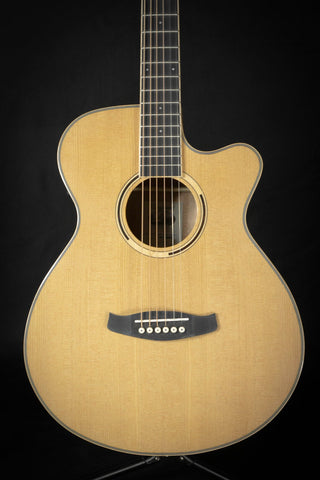
A relatively newer addition to the acoustic guitar family, the super folk shape combines the compact size of a parlor guitar with the depth and projection of a dreadnought. With a deeper body compared to traditional folk guitars, super folk guitars offer enhanced bass response and volume while retaining the comfort and playability of smaller instruments. This makes them ideal for players seeking a versatile acoustic guitar with a balanced, full-bodied tone.
The Influence of a Cutaway:
In addition to body shape and size, the inclusion of a cutaway can also influence the overall tonality of an acoustic guitar. A cutaway allows easier access to the higher frets, but it may also affect the resonance and volume of the instrument. While some argue that cutaways can slightly reduce the overall volume and bass response, others believe that any differences are negligible, especially in well-designed guitars. Ultimately, the decision to opt for a cutaway or non-cutaway design depends on the player's preferences and playing style.
Conclusion:
In the world of acoustic guitars, body shape and size play a pivotal role in shaping the instrument's sound and playability. From the booming resonance of a dreadnought to the intimate warmth of a parlor guitar, each shape offers a unique sonic palette catering to different musical styles and player preferences. By understanding the influence of body depth and size on tone, players can find the perfect balance between comfort and sonic expression, unlocking the full potential of their acoustic guitar experience.
Written by:
Ryan Havinga







